
Earl Marshal is a hereditary royal officeholder and chivalric title under the sovereign of the United Kingdom used in England. He is the eighth of the great officers of State in the United Kingdom, ranking beneath the Lord High Constable of England and above the Lord High Admiral. The dukes of Norfolk have held the office since 1672.

The Most Honourable Order of the Bath is a British order of chivalry founded by King George I on 18 May 1725. The name derives from the elaborate medieval ceremony for appointing a knight, of which bathing was an element. Knights so created were known as 'Knights of the Bath'. George I constituted the Knights of the Bath a regular 'Military Order'. He did not revive the Order of the Bath, which had not previously existed as an Order, in the sense of a body of knights governed by a set of statutes and whose numbers were replenished when vacancies occurred.

The College of Arms, or Heralds' College, is a royal corporation consisting of professional officers of arms, with jurisdiction over England, Wales, Northern Ireland and some Commonwealth realms. The heralds are appointed by the British Sovereign and are delegated authority to act on behalf of the Crown in all matters of heraldry, the granting of new coats of arms, genealogical research and the recording of pedigrees. The College is also the official body responsible for matters relating to the flying of flags on land, and it maintains the official registers of flags and other national symbols. Though a part of the Royal Household of the United Kingdom, the College is self-financed, unsupported by any public funds.
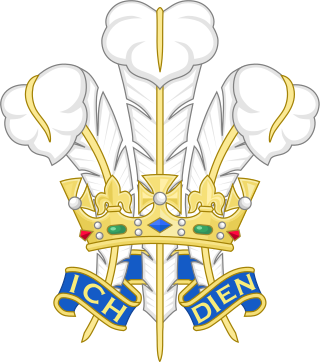
The Prince of Wales's feathers are the heraldic badge of the Prince of Wales, the heir to the British throne. The badge consists of three white ostrich feathers encircled by a gold coronet. A ribbon below the coronet bears the German motto Ich dien. As well as being used in royal heraldry, the feathers are sometimes used to symbolise Wales itself, particularly in Welsh rugby union and Welsh regiments of the British Army.

New Zealand Herald of Arms Extraordinary is the officer of arms responsible for the regulation of heraldry in New Zealand. Although affiliated with the College of Arms in London, the New Zealand Herald lives and works in New Zealand, and is not a member of the College Chapter. The current New Zealand Herald of Arms Extraordinary is Phillip Patrick O’Shea.

Somerset Herald of Arms in Ordinary is an officer of arms at the College of Arms in London. In the year 1448 Somerset Herald is known to have served the Duke of Somerset, but by the time of the coronation of King Henry VII in 1485 his successor appears to have been raised to the rank of a royal officer, when he was the only herald to receive coronation liveries.

Windsor Herald of Arms in Ordinary is an officer of arms at the College of Arms in London.

Arundel Herald of Arms Extraordinary is a supernumerary Officer of Arms in England. Though a royal herald, Arundel is not a member of the College of Arms, and was originally a private herald in the household of Thomas Fitzalan, Earl of Arundel. The first herald, John Cosoun, is known to have served the Earl both in Portugal in 1413 and later in France, where he attended his dying master in October 1415. The title was revived in 1727 as Herald Extraordinary.

Beaumont Herald of Arms Extraordinary was an officer of arms extraordinary in England. Beaumont was a royal herald, but was not a member of the College of Arms. The office was created in 1982 and named after the barony of Beaumont, one of the subsidiary titles of the Earl Marshal, the Duke of Norfolk. The badge of office combines the cross potent of the Kings of Jerusalem from whom the Beaumonts are descended, with the lion and fleur-de-lis charges from the family coat of arms. It is blazoned In front of a Cross Potent a Lion rampant within eight Fleurs-de-lis in orle Or.
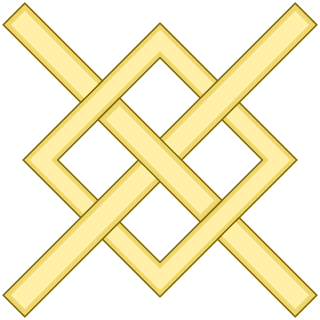
Maltravers Herald of Arms Extraordinary is a current officer of arms extraordinary in England. As such, Maltravers is a royal herald, but is not a member of the College of Arms in London. The present office was created in 1887 by the Earl Marshal, who was also the Duke of Norfolk and Baron Maltravers. The office is known to have been held by a pursuivant to Lord Maltravers when he was deputy of Calais from 1540 to 1544. The badge is blazoned as A Fret Or. It was officially assigned in 1973, though it had been assumed by two Maltravers Heralds in the 1930s. It derives from the coat of arms of Maltravers Sable a Fret Or and a Label of the points Ermine, and was the badge of John, Earl of Arundel through which family the barony passed to the Howard dukes of Norfolk.

Wales Herald of Arms Extraordinary is a current Officer of Arms Extraordinary under the Courts of England and Wales' jurisdiction. Wales is a Royal Herald, ie a member of the Royal Household, and while not being a member of chapter of the College of Arms, processes with the other heralds at ceremonial occasions. Wales Herald forms an integral part of the procession when the British monarch officially opens a session of Senedd Cymru at Cardiff Bay.

Fitzalan Pursuivant of Arms Extraordinary is a current officer of arms in England. As a pursuivant extraordinary, Fitzalan is a royal officer of arms, but is not a member of the corporation of the College of Arms in London. As with many other extraordinary offices of arms, Fitzalan Pursuivant obtains its title from one of the baronies held by the Duke of Norfolk, Earl Marshal of England; the appointment was first made for the coronation of Queen Victoria in 1837. The badge of office was assigned in 1958 and is derived from a Fitzalan badge of the fifteenth century. It can be blazoned An Oak Sprig Vert Acorns Or, but is also recorded as A Sprig of Oak proper.
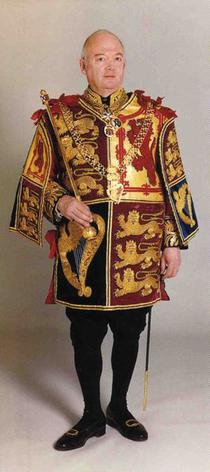
John Philip Brooke Brooke-Little was an English writer on heraldic subjects, and a long-serving herald at the College of Arms in London. In 1947, while still a student, Brooke-Little founded the Society of Heraldic Antiquaries, now known as the Heraldry Society and recognised as one of the leading learned societies in its field. He served as the society's chairman for 50 years and then as its president from 1997 until his death in 2006.

Surrey Herald of Arms Extraordinary was an English officer of arms. Though an officer of the crown, Surrey Herald Extraordinary was not a member of the corporation of the College of Arms in London. This office was created in 1856 and first held by Edward Stephen Dendy. The badge of office was assigned in 1981. The badge is blazoned Within a representation of a Herald's Collar of SS Argent a Tabard chequy Or and Azure. These were the arms of John de Warenne, Earl of Surrey in the late thirteenth century, from whom the earldom descended through the Fitzalans to the Howard dukes of Norfolk and earls marshal.
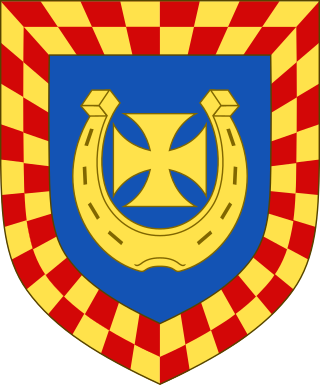
Sir Conrad Marshall John Fisher Swan was a long-serving officer of arms at the College of Arms in London. Having been first appointed to work at the College in 1962, he rose to the office of Garter Principal King of Arms in 1992, a position he held until 1995. He was the first Canadian ever to be appointed to the College of Arms.
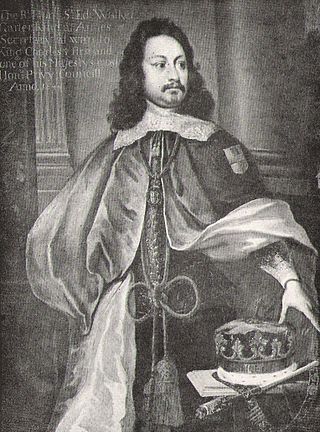
Sir Edward Walker was an officer of arms and antiquarian who served as Garter King of Arms.
Blanche Lyon Pursuivant of Arms in Ordinary was an English office of arms created during the reign of King Edward IV.
Mowbray Herald of Arms Extraordinary was an English officer of arms. From the time of King Richard II to that of Henry VI, Mowbray was the Duke of Norfolk's private herald. Since its revival in 1623 the title has always been given to a herald extraordinary. Though an officer of the crown, Mowbray Herald Extraordinary was not a member of the corporation of the College of Arms in London. Sir William le Neve appears to have been appointed to the office from 29 June 1624 until his appointment as York Herald the following year. The office was recreated in January 1695 for Robert Plot, who was made Registrar of the College of Heralds just two days later and was subsequently held by Joseph Edmondson.

Howard Pursuivant of Arms Extraordinary was an officer of arms extraordinary in England; that is, a royal herald but not a member of the College of Arms in London.

Major David Rankin-Hunt is a British member of the Royal Household at St James's Palace in London. He has been the Norfolk Herald Extraordinary since 1994.




























